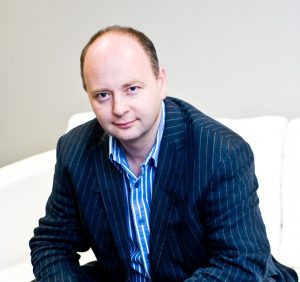HMDT Blog: Memory in Action: Rwanda 20 years after genocide
Stephen Smith, Executive Director Chair of the USC Shoah Foundation and the UNESCO Chair on Genocide Education, discusses how genocide memory and education in Rwanda can be used to provoke action and prevent future genocides.
As the period of remembrance of the Genocide in Rwanda draws to a close, I look back over a period of transformation. Over the last three months in communities from Kigali to Kansas, Senegal to Sweden, people have been exhibiting remembrance of the genocide through action. Since its launch in January, Kwibuka20 has invited people all over the world to mobilise their networks by hosting more than 200 events, sharing video messages, creating art and engaging in dialogue both online and offline.
It was the Rwandan communities themselves that led this global effort. The Kwibuka Flame Tour united 30 districts of Rwanda, with 30 lamps burning brightly from the same source. This flame symbolises the perseverance, the resilience, and the courage of all Rwandans to rebuild their country over the past 20 years. As the eternal flame – known as the Urumuri Rutazima – toured the country, it presented a platform for survivors to tell their stories and honour the lives lost. From there the message resonated out, reaching the African Union, the United States Holocaust Memorial Museum, the United Nations and many hundreds of venues. The world came together to remember.
At the USC Shoah Foundation, where I have the privilege to serve as Executive Director, we are reminded every day of the need to tell and re-tell these stories and set the world alight with remembrance, unity, and renewal. The act of remembrance is not a passive one, but one where we work to overcome prejudice, intolerance, and bigotry – and the suffering they cause. It is with hope towards these goals that we use tools like the IWitness online testimony-based platform for genocide education around the world. During the commemoration I went into classrooms in Rwanda and observed young Rwandan students learning from Holocaust testimony, and applying what they learned to their own lives – one example of memory in action.

Stephen Smith
In my role as Executive Producer of Kwibuka20, I had the privilege of working closely with survivors and members of the next generation in Rwanda. The pain sears very deeply still. Such pain never leaves. And yet these same fragile people are the ones to whom we look for strength and on whom the future of a nation rests. It is their willingness to shun hatred that means the next generation of children could live lives free of the pain their elders endured. That is also memory in action.
As we sat in the classroom, watching students interacting with testimony, one of my colleagues, former Chelsea Manager, and son of Holocaust survivors, Avram Grant asked the students, ‘are killers born, or are they made?’. In the ensuing moments Rwandan students discussed what they had learned from the Holocaust survivors and what they had observed as apart of their own experience. They had varying views about the ‘nature-nurture’ debate, but views that any healthy classroom with critical thinking skills should have – and significantly, no views that would result in the deaths of their classmates – a significant change from 20 years ago. This also was memory in action.
It was crystal clear from my vantage point that a new generation educated by the testimony of genocide survivors is better equipped to make the decision not to kill – irrespective of their nature or nurture. Listening to testimony puts the viewer face-to-face with genocide on a micro level.
In Rwanda, genocide commemoration and genocide education is in the fabric of the country. The partnership between Rwandan schools and USC Shoah Foundation through the educational use of IWitness focuses on the importance of the individual story within the historical narrative and underscores the power each of us has in making a difference. This is not a quick process; it will take generations at best. Just as pain lasts a lifetime, overcoming hatred takes a lifetime also. It requires patience on all our parts.
The Holocaust Memorial Day Trust turns memory into action. In the same way that Kwibuka addressed a generation removed from the genocide by 20 years, so too Holocaust Memorial Day takes stories of deep suffering and provides a way to recognise the pain and still empower action. The two are not mutually exclusive; arguably they should always be linked. Had there been action before the Holocaust, before Rwanda, there would be no, or at least less, pain. So in the face of genocide, action itself is a form of memory.
Genocide education is a slow process; it takes time for the stories of a silenced generation to work their way into a culture and declare that ‘never forget’ will truly be a reality. Only then can we fully realise the mission of ‘never again’.
Find out more:
- Discover how you can get involved in genocide education through organising a Holocaust Memorial Day event
- Learn about the Genocide in Rwanda
- Visit the USC Shoah Foundation website
Photo credit: USC Shoah Foundation
The HMDT blog highlights topics relevant to our work in the field of Holocaust and genocide awareness and commemoration. The views expressed are those of the author and do not necessarily represent the views of HMDT.